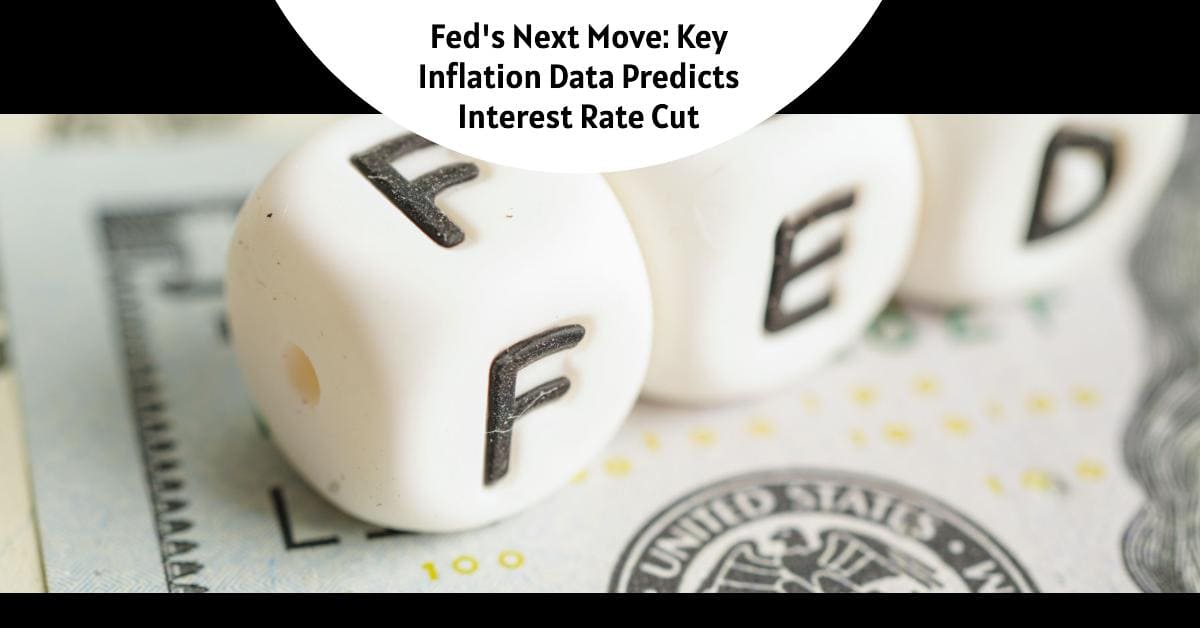The U.S. economy is a complex and dynamic system, constantly adapting and requiring adjustments in monetary policy to maintain stability. The Federal Reserve's interest rate decisions are a crucial tool in this process, impacting everything from borrowing costs to investment decisions. Recent economic indicators, particularly inflation reports, have sparked discussions about potential rate cuts, a topic of significant interest across various sectors.
Understanding the Potential for Federal Reserve Rate Cuts Following Key Inflation Reports
Inflation Gauges and Potential September Move:
- Key Inflation Gauges: The Federal Reserve closely monitors multiple inflation measures, including the Consumer Price Index (CPI) and the Personal Consumption Expenditures (PCE) price index. Recent reports suggest a potential slowdown in inflation. As of June 12, 2024, the US Consumer Price Index (CPI) was 313.22, which is a 3.25% increase from the previous year. This is a moderation from the higher inflation rates observed earlier in 2024. The most recent Personal Consumption Expenditures (PCE) price index data was released on May 31, 2024, for the month of April, which showed a year-over-year inflation rate of 2.7%. This is unchanged from the March rate of 2.7%. While the slowdown is encouraging, the Fed will likely wait for a sustained trend of lower inflation before initiating rate cuts.
- September Cut on the Horizon?: The slowdown in inflation observed in June's data might pave the way for the Fed to initiate rate cuts. However, the decision to cut rates hinges on a sustained trend of low inflation, not just a single data point. The Fed will likely monitor upcoming inflation reports in July and August to confirm a consistent slowdown. They will also consider other economic indicators like employment and consumer spending to ensure the overall economic picture aligns with their policy goals. If the positive trend in inflation persists and the labor market remains healthy, then a rate cut in September 2024 becomes a more realistic possibility.
Balancing Growth and Stability: The Fed's Dual Mandate
- Dual Mandate: The Federal Reserve operates under a dual mandate – to achieve maximum employment and maintain price stability. Inflation is a critical factor in determining economic health. Lower-than-expected inflation, like the potential slowdown we're seeing, suggests the economy might not be overheating, potentially opening the door for rate cuts.
- Stimulating Growth: Rate cuts lower borrowing costs, making it cheaper for businesses and consumers to borrow money. This can stimulate economic activity by encouraging investment and spending, potentially leading to job growth and a stronger economy.
Beyond Inflation: Additional Factors Considered by the Fed
The Fed doesn't base its decisions solely on inflation. Here's a broader picture of what they consider:
- Employment Rates: A strong labor market, indicated by low unemployment rates, is another key factor. The Fed will likely want to see continued job growth alongside moderating inflation before cutting rates.
- Consumer Spending: Personal spending data, released alongside inflation figures, sheds light on consumer confidence and spending habits. Recent retail sales data suggests a potential slowdown in demand for goods, but figures on service spending are crucial to understand the complete picture. Economists predict a slight increase in nominal personal consumption and income in the upcoming report.
- Global Economic Conditions: The global economic landscape also influences the Fed's decisions. External factors like global inflation trends, currency fluctuations, and geopolitical events can all play a role.
A Consistent Pattern of Low Inflation is Key
While a single report showing lower inflation is encouraging, the Fed needs to see a consistent trend before initiating rate cuts. This cautious approach reflects their commitment to ensuring any adjustments are well-timed and promote long-term economic stability.
The Far-Reaching Impact of Rate Cuts
Potential rate cuts have significant implications across various aspects of the economy:
- Interest Rates: Mortgage rates, auto loan rates, credit card interest rates, and other borrowing costs are all likely to decrease with rate cuts, impacting household budgets and investment decisions.
- Stock Market: Rate cuts can potentially boost the stock market by making stocks more attractive compared to bonds, which typically see price declines when interest rates fall. However, the exact impact depends on various factors and market conditions.
- Consumer Confidence: Lower borrowing costs and a potentially stronger economy can boost consumer confidence, leading to increased spending and economic activity.
- Business Investment: Rate cuts can incentivize businesses to borrow money for expansion and investment, leading to job creation and economic growth.
Looking Ahead: Monitoring the Fed's Decisions
The coming months will be crucial in determining the Fed's monetary policy direction. Closely monitoring inflation reports, employment data, consumer spending figures, and the Fed's pronouncements will provide valuable insights into the potential timing and magnitude of rate cuts. Stakeholders across various sectors, from individual investors to businesses and policymakers, will be strategically planning their actions based on the Fed's decisions.
For a more in-depth analysis, consider exploring the following resources:
- Federal Reserve releases: https://www.federalreserve.gov/fomc/
ALSO READ:
- Interest Rate Predictions for the Next 3 Years: (2024-2026)
- Interest Rate Predictions for Next 2 Years: Expert Forecast
- Interest Rate Predictions for Next 10 Years: Long-Term Outlook
- When is the Next Fed Meeting on Interest Rates in 2024?
- Interest Rate Cuts: Citi vs. JP Morgan – Who is Right on Predictions?
- More Predictions Point Towards Higher for Longer Interest Rates



